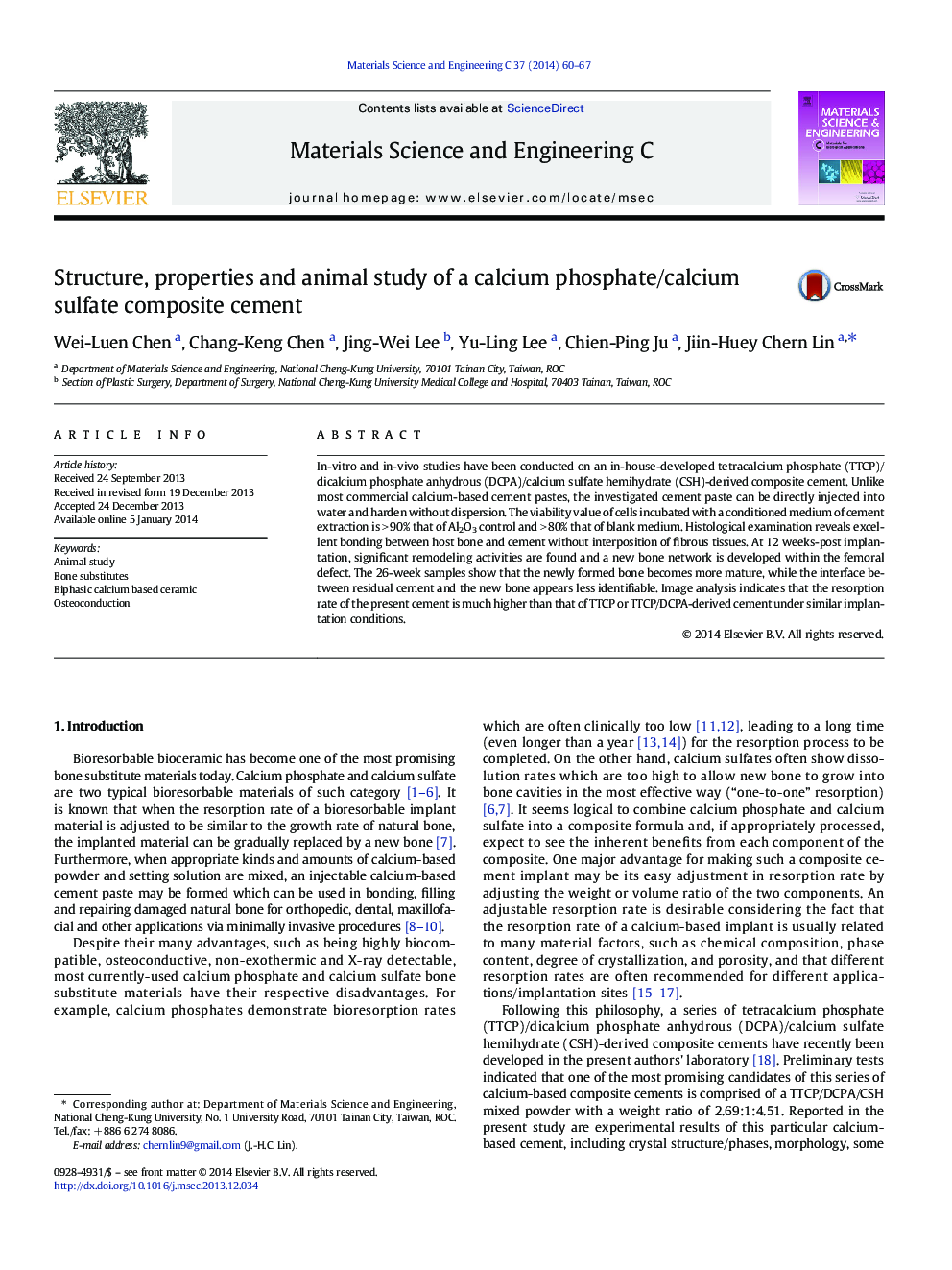| Article ID | Journal | Published Year | Pages | File Type |
|---|---|---|---|---|
| 1428984 | Materials Science and Engineering: C | 2014 | 8 Pages |
•The present cement paste could be self-hardened in water without dispersion.•The viability value of cells incubated in the cement is non-toxic.•Surgical application of the present cement was relatively easy.•The residual cement appeared to be nicely incorporated with surrounding bone.•Excellent bonding between host bone and implanted cement was observed.
In-vitro and in-vivo studies have been conducted on an in-house-developed tetracalcium phosphate (TTCP)/dicalcium phosphate anhydrous (DCPA)/calcium sulfate hemihydrate (CSH)-derived composite cement. Unlike most commercial calcium-based cement pastes, the investigated cement paste can be directly injected into water and harden without dispersion. The viability value of cells incubated with a conditioned medium of cement extraction is > 90% that of Al2O3 control and > 80% that of blank medium. Histological examination reveals excellent bonding between host bone and cement without interposition of fibrous tissues. At 12 weeks-post implantation, significant remodeling activities are found and a new bone network is developed within the femoral defect. The 26-week samples show that the newly formed bone becomes more mature, while the interface between residual cement and the new bone appears less identifiable. Image analysis indicates that the resorption rate of the present cement is much higher than that of TTCP or TTCP/DCPA-derived cement under similar implantation conditions.
